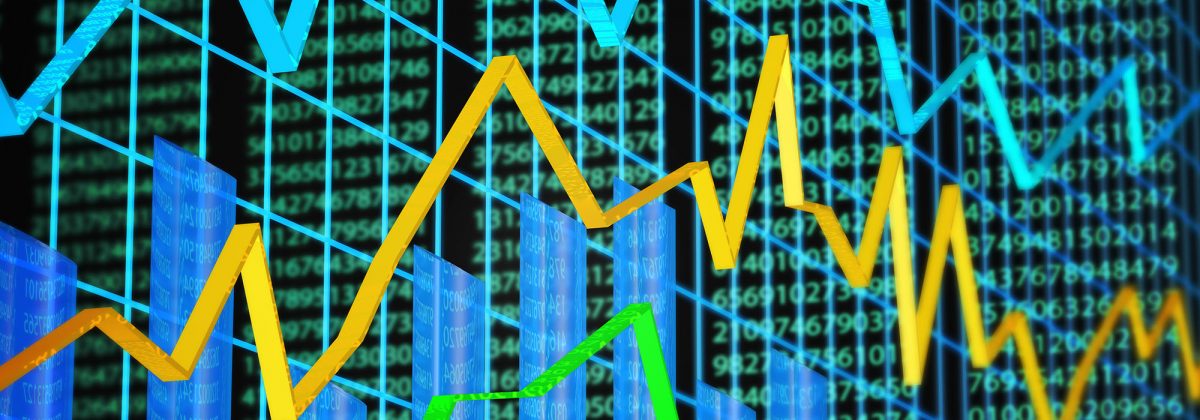Volatility is a critical factor that should be taken into consideration when trading in the forex market. Understanding volatility, whether low or high, gives traders an insight into the risks involved in trading during a particular period of time. It will inform a trader about whether to buy or sell a certain currency pair or even when to not enter the markets at all.
A volatile market offers multiple trading opportunities if you know how to implement the right approach to volatility forex trading. However, the first step is risk analysis. And, to conduct effective risk analysis, you need to know is how to calculate volatility.
A type of volatility, known as Historical Volatility (HV), is considered useful for risk analysis. It is a measure of the dispersion of returns from a particular currency index over a specific period of time. In general, HV is calculated by finding out the average deviation that has occurred in the average price of an instrument within a fixed timeframe.
A higher value of historical volatility means higher risk associated with a currency, although risk can work in both a bullish and bearish manner. Most analysts and traders use historical volatility to estimate past performance and to create new investment strategies.
There are two useful approaches to calculating volatility in the forex market. Let’s tak a look.
Calculating Volatility Using Microsoft Excel
With the help of Microsoft Excel, you can measure the volatility of a particular currency pair. For this, you need to follow some steps.
Step 1: Choose the Timeframe
To calculate the volatility of a particular currency index, first choose the time period for which the value is to be calculated. This completely depends on you, but it is useful to choose a duration of 10 days for the sake of convenience.
After this, enter all the assumed closing prices for the currency in a chronological manner into the Excel sheet. Assumed closing price refers to the point at which you consider the currency trading to be closed for the day. This is because the forex market operates 24 hours a day and there are no closing bells, unlike the stock markets, which have a daily trading window.
Suppose you want to find the volatility over an ‘n’ day period, you will require the data for (n+1) days. So, in the case of a 10-day period, you will need data for the previous 11 days to calculate volatility for your chosen timeframe.
The cells in column A should contain the various dates and column B should be filled with the assumed closing prices. Remember to assign the first cell of both column A and B as “Date” and “Closing Price,” respectively.
Step 2: Compute the Daily Returns
You can calculate daily returns with the formula:
Return = (End Price / Start Price) – 1
To further improve the results and for practical applicability, the formula can be changed to:
Return = Ln (End Price / Start Price)
Where Ln refers to the natural log or logarithm to the base ‘e’. The result obtained from this formula is also known as “Log Returns.”
Add the percentage equivalent of Log Returns or Daily Returns for the various dates to the cells of column C.
Step 3: Use the Inbuilt Function
Microsoft Excel has an inbuilt function known as STDEV, which you can use to calculate the standard deviation of the daily return values. Standard deviation here works as a measure of the volatility of a particular currency pair.
To use this function, you need to perform the following steps:
- Place your cursor on an empty cell
- Press the “=” key
- Now type “STDEV” in the cell and place an open bracket after it: (
- Choose all the data values from the daily return column and put a closed bracket next to it: )
- Click on Enter
After this process is completed, Excel will give you the standard deviation value, which is the calculated daily volatility.
Step 4: Convert to Annual Volatility
This is an important step you need to remember. To perform the conversion into annual volatility, you simply need to multiply the value of daily volatility with the square root of time.
For instance, if the daily volatility comes out to be 1.5%, then:
Annual Volatility = 1.5% X
Calculating Volatility Using a Histogram
This is a much simpler and more accurate method of calculating volatility and analysing risk. To compute volatility, you need to plot the historical performance of your forex investments on a chart called a histogram. A histogram is a chart that records the number of observations under a variety of different categories.
To represent the historical performance of a currency index on a histogram, you need to follow certain rules. Let’s take the example of the USD as the currency that we wish to analyse.
- The Y-Axis represents the magnitude of performance of the USD
- The X-Axis represents the frequency of the performance experienced by the USD
The histogram method will give you information about the percentage of time for which the performance of the currency was above, below or within a given range.
Which Method is Better?
The Histogram method provides three great advantages over the standard deviation method:
- The performance of a currency doesn’t necessarily occur in a normal distribution pattern.
- The impact of kurtosis and skewness is additionally recorded in the histogram chart. This can help you take measures to mitigate any unexpected volatility.
- The exact magnitude of losses and gains can be analysed with histograms.
The disadvantage of this method is that the histogram chart can be affected by heteroskedasticity. And, remember, past performance of a currency does not indicate its future direction.
So, while the histogram method might have its limitations, it still acts as an effective baseline for measuring the investment risk and making informed decisions.
Reference Links





